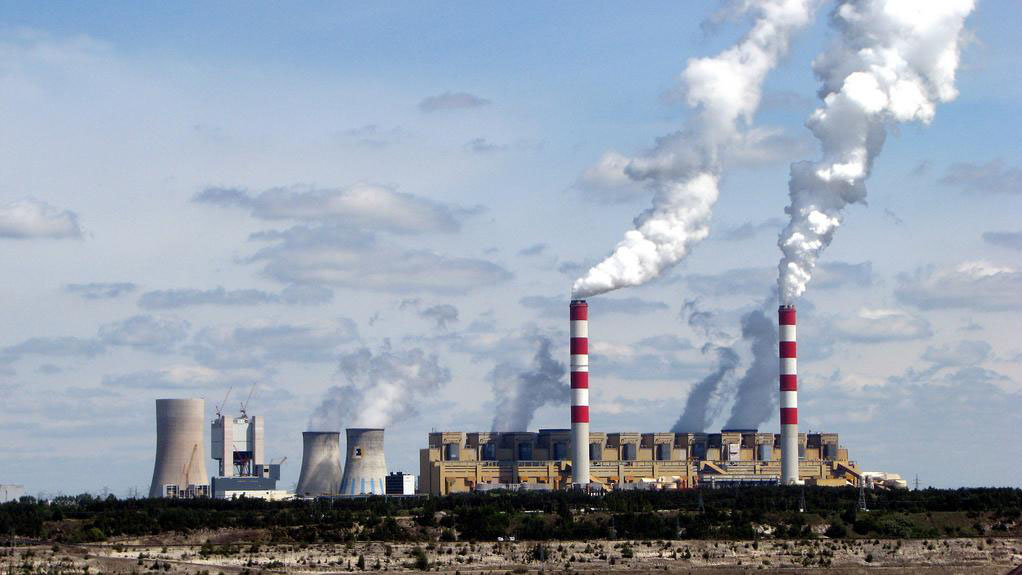Satellites measure emissions from giant coal-fired power plant for the 1st time
This is the first time that carbon dioxide emissions from a human-made source have been accurately measured from space.

NASA has measured fluctuations in the amount of carbon dioxide released by Europe's largest coal-fired power plant in a first-of-its-kind study that paves the way for independent worldwide monitoring of human-made greenhouse gas emissions.
The Orbiting Carbon Observatory 2 (OCO-2) spacecraft, launched in 2014, and its sister instrument OCO-3, which has been mounted on the International Space Station since 2019, primarily focus on mapping concentrations of carbon dioxide in Earth's atmosphere on the regional and continental level. But a team of researchers led by Ray Nassar, a senior researcher at Environment and Climate Change Canada, recently managed to use the satellites' measurements to extract a detailed track record of peaks and troughs in the emission intensity of a single power plant.
Abhishek Chatterjee, project scientist for the OCO-3 mission at NASA's Jet Propulsion Laboratory in Southern California, called the new research a "pleasant surprise."
Related: Satellites discover huge amounts of undeclared methane emissions
"As a community we are refining the tools and techniques to be able to extract more information from the data than what we had originally planned," Chatterjee said in a statement. "We are learning that we can actually understand a lot more about anthropogenic emissions than what we had previously expected."
Scientists have already mastered using satellites to accurately measure human-made emissions of the more potent but less common greenhouse gas methane. Detecting individual anthropogenic sources of the more abundant carbon dioxide has, however, so far been impossible due to the high background concentrations of the gas in Earth's atmosphere.
The object of the new study was the brown-coal-burning Bełchatów Power Station in Poland. Capable of generating up to 5,102 megawatts of power, the plant has emitted over 1 billion tonnes (1.1 billion tons) of carbon dioxide into the atmosphere since it came online in 1988, according to Client Earth. The government of Poland has committed to replacing the plant with cleaner resources by 2036, but these plans may still hit obstacles.
Breaking space news, the latest updates on rocket launches, skywatching events and more!

By analyzing the plant's emission plumes as detected during several satellite overpasses between 2017 and 2022, the research team led by Nassar saw changes in carbon dioxide levels that were consistent with the plant's hourly fluctuations in electricity generation and temporary maintenance shutdowns of individual units.
"Providing a more detailed picture of carbon dioxide emissions could help to track the effectiveness of policies to reduce emissions," Nassar said in the statement. "Our approach with OCO-2 and OCO-3 can be applied to more power plants or modified for carbon dioxide emissions from cities or countries."
Measuring emissions from space would provide a tool for accurate monitoring of sources. Such objective data would enable intergovernmental authorities to ensure compliance of individual countries with international emission reduction pledges. Currently, countries self-report their emissions based on the productivity of individual industries, which introduces not only inaccuracies but also delays into the emissions auditing process.
The European Space Agency (ESA) is currently developing a dedicated satellite constellation for measuring carbon dioxide emissions from industrial sources. The constellation, called CO2M and announced in 2021, should reach space in late 2025 or early 2026.
In the meantime, NASA said it would extend the operations of OCO-3, which features a mapping observation mode, suited for monitoring point-source emission sources, such as individual power plants.
"It is really exciting to think that we will get another five to six years of operations with OCO-3," Chatterjee said. "We are seeing that making measurements at the right time and at the right scale is critical."
The study was published in the journal Frontiers in Remote Sensing in October last year.
Follow Tereza Pultarova on Twitter @TerezaPultarova. Follow us on Twitter @Spacedotcom and on Facebook.

Tereza is a London-based science and technology journalist, aspiring fiction writer and amateur gymnast. Originally from Prague, the Czech Republic, she spent the first seven years of her career working as a reporter, script-writer and presenter for various TV programmes of the Czech Public Service Television. She later took a career break to pursue further education and added a Master's in Science from the International Space University, France, to her Bachelor's in Journalism and Master's in Cultural Anthropology from Prague's Charles University. She worked as a reporter at the Engineering and Technology magazine, freelanced for a range of publications including Live Science, Space.com, Professional Engineering, Via Satellite and Space News and served as a maternity cover science editor at the European Space Agency.
